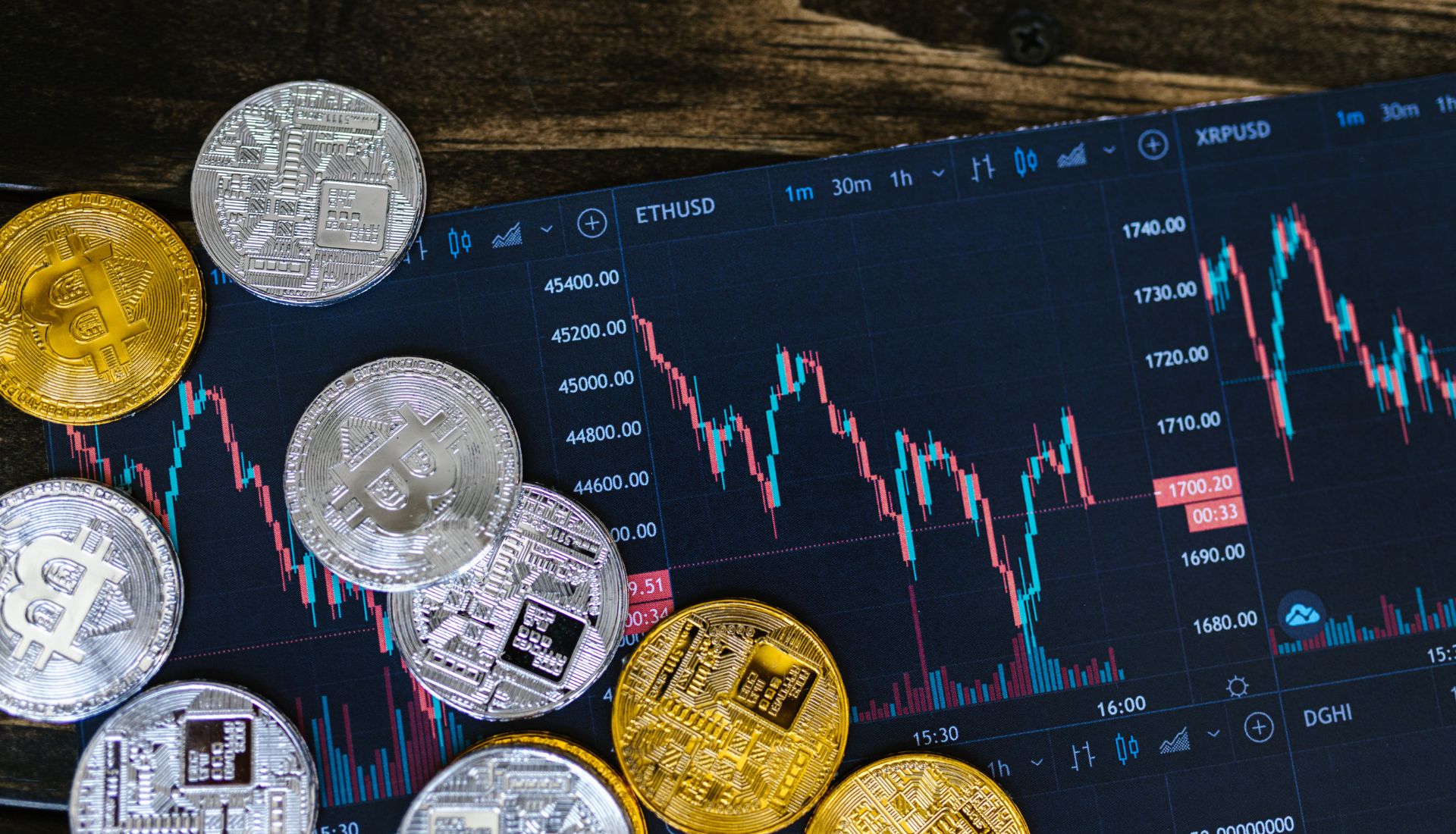The risks of investing in crypto are real; you could double your money or lose it all overnight.
The market is dynamic and exciting, and it hardly has any growth limitations. But it’s also risky.
Extreme market volatility and scams make crypto one of the riskiest markets today, even for seasoned investors. There are a great number of investors who come into the market inspired by the promises of profits, but not by the threats.
If you are looking at Bitcoin, Ethereum, or any other digital currencies, take this advice first, before you start.
Awareness of the risks is your first step to protection. And knowing how to contain these? That’s your greatest opportunity to survive in the market long enough for you to see a profit.
We’ll outline the main risks of trading crypto and provide tricks to help you invest safely and confidently.
Table of Contents
- The Risk of Volatility
- Liquidity Challenges in Crypto Trading
- Scams and Frauds in the Crypto Space
- Regulatory Uncertainty
- Choosing the Wrong Broker
- Final Thoughts: Managing Risk Without Missing Out
The Risk of Volatility

Crypto markets are wildly unpredictable.
You can observe the performance of your portfolio double in a single day.
But the next day, you could lose half your portfolio , that’s how unpredictable the market can be.
In decentralized networks like Litecoin, there’s no central authority, which adds to market unpredictability. Cryptocurrencies do not have the traditional financial statements, earnings reports or cash flow statements and none of them are backed by a single governing body that goes on to help stabilise the price. Their values are created within a blend of hype, feelings, posts on social media and breaking news.
Take Bitcoin, for instance; it’s not unusual for it to see a price change of 20% or more in one day. It is particularly high among the smaller altcoins.
How to Minimize Volatility Risk
- Diversify Your Investments:
Do not focus your investments on one cryptocurrency. Spread your investment into several different cryptocurrencies so as to offset the impact of one coin’s price movements.
- Use Wider Stop-Loss Levels:
When stop-loss levels are too close together, they may get hit by a fluctuation in the market. Expanding the scope of your stop-loss orders minimises the possibility of selling out in times of normal market fluctuations.
- Trade Smaller Positions:
By being flexible and trading smaller amounts, your portfolio will be safe from big drawdowns should the market do the opposite of what you predicted. Lower positions allow you to reduce the pressure of both the emotions and the wallet.
- Stick to High-Cap Coins:
Prefer mature cryptocurrencies such as Bitcoin (BTC) and Ethereum (ETH) because they tend to manifest a more stable price movement. For high-cap coins, the price volatility is not as severe as with other coins, and price movements are relatively stable.
- Monitor Market Sentiment:
Keep up on developments in the crypto space, read opinions by the biggest minds, and follow world economic headlines. Use factors such as the Crypto Fear & Greed Index or check out top trends on social media centres to gauge market sentiment.
- Trade Smart, Not Fast:
Crypto markets are uncertain; however, with the right mindset to risk and strategic planning, You’ll be better prepared to manage volatility proactively, rather than reacting impulsively.
Liquidity Challenges in Crypto Trading

Liquidity describes how easy or difficult it is to purchase or sell an asset without disturbing the price too much.
It is with unfamiliar altcoins in the world of crypto that the difficulty in achieving liquidity can be pronounced. Selling a large volume of a low-liquidity coin can crash the price even before your trade completes, even before your order is settled.
Why? It happens because there are just not enough buyers at the level of your targeted price. Consequently, you may get slippage where your real selling price ends up a long way down from what you intended.
How to Manage Liquidity Risk:
Trade Major Coins:
Only focus on popular crypto coins like Bitcoin (BTC) and Ethereum (ETH). Due to a larger volume and firmer liquidity, major cryptocurrencies are in a position to have a smoother entry/exit strategy with minimal price movements.
Break Down Large Trades:
For massive trades, divide your order and spread the order at a later time. This reduces the market impact of your trading and aligns your total selling price toward your desired quantity.
Use High-Liquidity Platforms:
Choose venues with great liquidity and populations of active traders. Using reputable exchanges enhances the chances that your orders will get prompt, reasonable pricing.
Avoid Illiquid Assets and Exchanges:
Do not invest in lesser-known cryptocurrencies or use those exchanges with small trading volumes. Although it appears to be a sound investment, illiquid assets can lead to slippage, execution delays, or you can be stuck in a trade you cannot get out of.
Scams and Frauds in the Crypto Space

The widespread scam culture in the crypto world is one of the darkest areas of the cryptographic marketplace.
After all, scammers use a variety of schemes to deceive, making false tokens, conducting rug-pulls, breaching wallets, or creating dishonest exchanges. It is possible that you will see a project with 10x returns advertised, only for the founders to run off with your money a week later.
Such scams don’t just target beginners , even experienced traders can fall for them. Even savvy investors can fall victim to phishing scams or unsavoury DeFi platforms.
How to Avoid Scams and Frauds
- Research the Project Thoroughly:
Always investigate before investing. Keep your eyes open to projects with undisclosed or secret teams, as this can lead to a scam.
- Check for Audits and Use Case:
Make sure that the project has been audited and is based on a practical case. Is there an audit by a reputable security company on the project? Are its smart contracts secure? A real project solves an existing problem, not just to use trends.
- Be Sceptical of Unrealistic Promises:
Many times, if promises seem too good, red flags can be raised. Unrelated risk and exorbitant gain is are classic signs of a scam.
- Use Trusted Exchanges Only:
Deposit your bucks into tested full-scale exchanges like Coinbase, Binance, Kraken, or Gemini. In this manner, you’ll be insured from last-minute exchange problems, which could leave your funds stranded.
- Enable Two-Factor Authentication (2fa):
Take an extra step and use your accounts with two-factor authentication. With available 2fa, you can secure your funds if your login credentials get stolen.
- Store Crypto Safely in Cold Wallets:
Do not store huge amounts of money on the exchanges. Use a hardware wallet or some other type of cold storage to protect your cryptocurrency value, since these are superior to the platform in safeguarding your funds from being stolen or the failure of the platform.
- Stay Vigilant and Question Everything:
Scammers can never be short of new schemes for scamming. Stay alert, check any information you find, and do not take everything for granted, as with every project, and do what your instinct tells you to do.
Regulatory Uncertainty

Much of the crypto business is wrapped up in legal ambiguity, and that leaves many players wondering what the rules are. There are times when governments declare a positive interest in digital currencies.
The next day, crypto trading might be banned or face strict regulatory crackdowns. Such government actions can lead to a sudden price collapse. Such events have happened in China, India, the U.S., and many European jurisdictions. The result? Uncontrollable crashes, Frozen accounts or complete suspension of trading services.
Poorly laid regulations are a major threat to crypto firms, which see their projects delayed, funding stopped or sued. The investors are always in fear of regulatory changes.
How to Handle Regulatory Risk
- Stay Informed on Regulations:
Monitor updates and statements from bodies charged with regulations in your region and around the world. Government regulations towards cryptocurrencies tend to change rapidly, carrying the risk of affecting your trading rights or valuations of your assets.
- Diversify Across Regions and Platforms:
Avoid putting your money all in one exchange or placing all your assets in the borders of one country. In order to hedge against volatile changes in regulation, diversify your assets across different exchanges and nations.
- Use Decentralized Exchanges (DEXs):
Provided centralised exchanges are restricted or eliminated, decentralised exchanges come in as a backup. Their utility means you can trade without centralised oversight.
- Expand Beyond Crypto:
Do not invest all of your money in cryptocurrencies. Ensure you have a diverse asset portfolio, such as stocks, gold, or real estate, to reduce hazards.
Choosing the Wrong Broker

It is not unusual for traders to end up losing financially due to using the wrong platform. The quality of the brokers and the exchanges is very diverse. There are platforms that are failing in customer support, with constrained liquidity issues, and a lack of sufficient security measures.
Many exchanges are unlicensed and unregulated, so you do not have the legal protection that may arise if something happens to your account. Imagine if your account were temporarily halted, without you knowing the reasons for it, or all of your money stolen due to a hacking issue.
What may appear strange has happened more often than you would tend to believe in crypto trading.
How to Pick the Right Broker
- Choose Regulated Platforms:
Make sure that the exchange has all it takes to be licensed and is acting according to the financial laws of your country. Verify their licensing, see what other users say about them, and verify the transparency of their operation.
- Look for Strong Security Measures:
Determine which brokers offer your funds cold storage as well as insurance against losses and use two-factor authentication to secure your accounts.
- Don’t Fall for Low Fees Alone:
Don’t compromise security just to save on fees. Avoid unproven brokers even when rates are low. Going after the low fees rather than security can set you up to lose a lot.
- Check Their Performance in Volatile Markets:
Choose the platforms that have proven to always perform dependably with large trading activity and severe market changes. Volatile markets judge a platform’s reliability better than anything else.
- Trustworthy Brokers Protect Your Funds:
A reliable broker will ensure that your money is secured through strong security measures and easy-to-use policies, which will help protect your investments.
Final Thoughts: Managing Risk Without Missing Out
Crypto is not leaving – it is remaking finance, ownership and investment as we know it. However, do not let the hype decide your strategy. Hope is not a plan. You can’t totally avoid risk, but you can learn how to manage it. Pick your assets carefully, ensure your funds are secure, be aware, and never listen to shortcuts.
The more you treat crypto like a real investment, not a gamble, the better you are in for.
